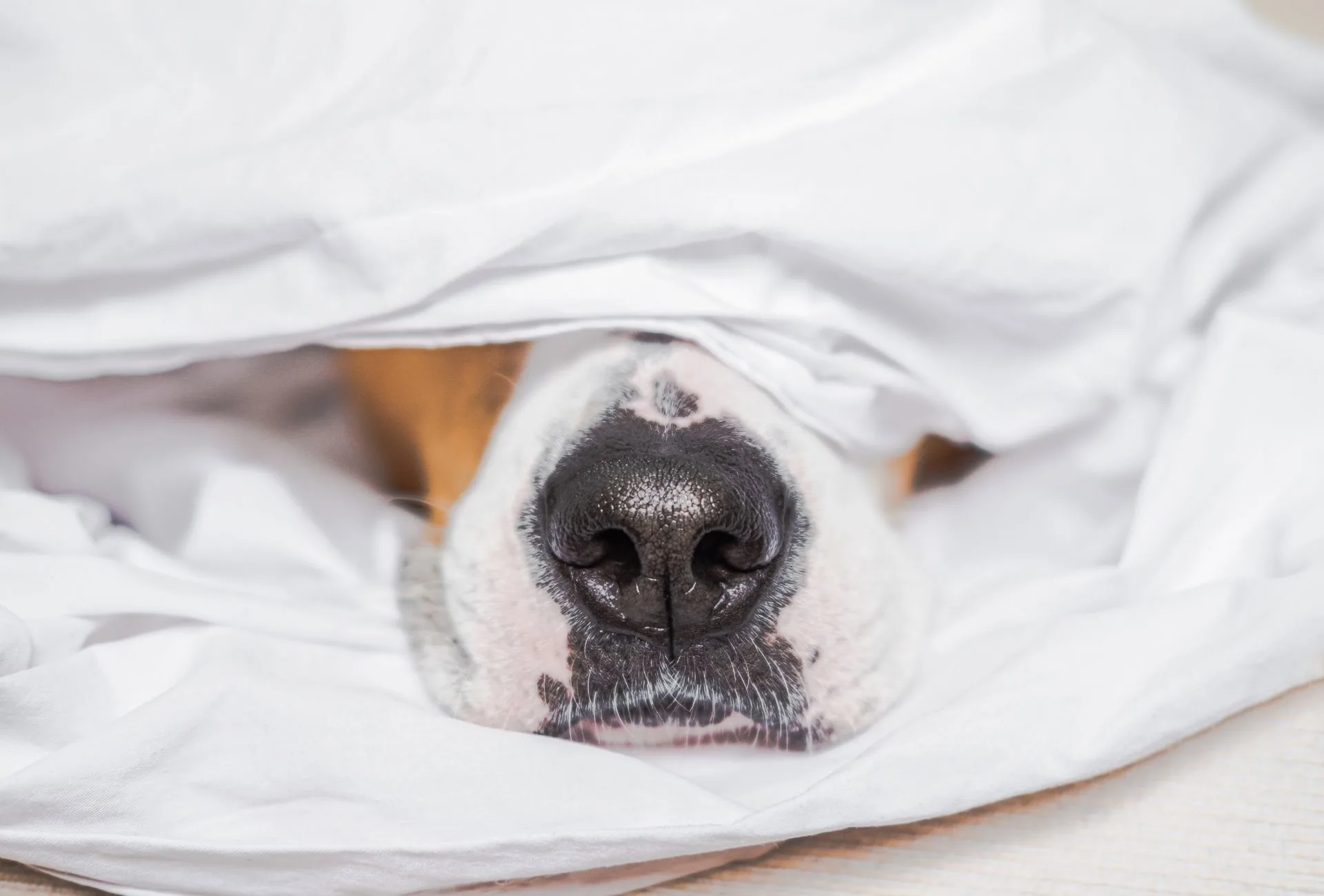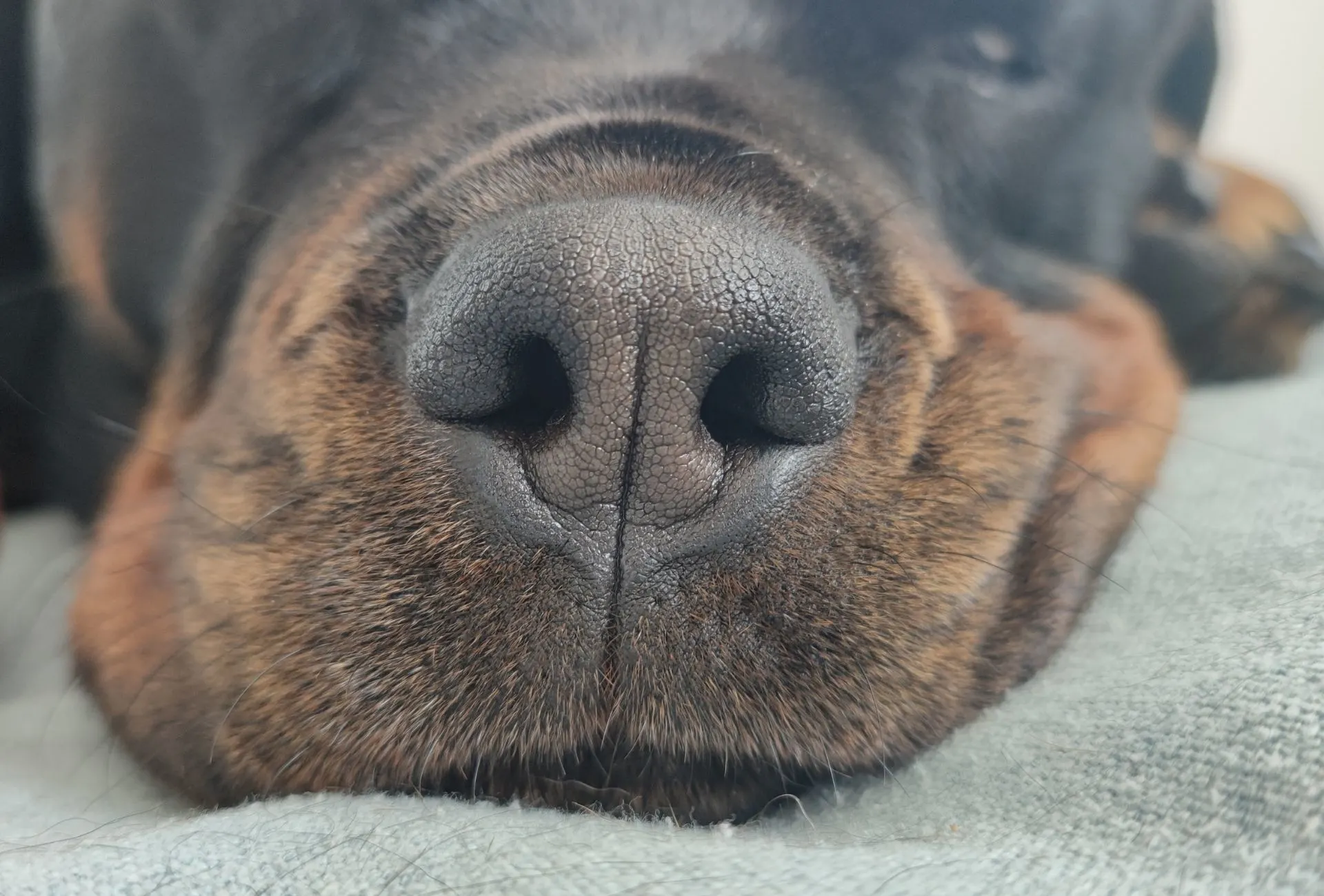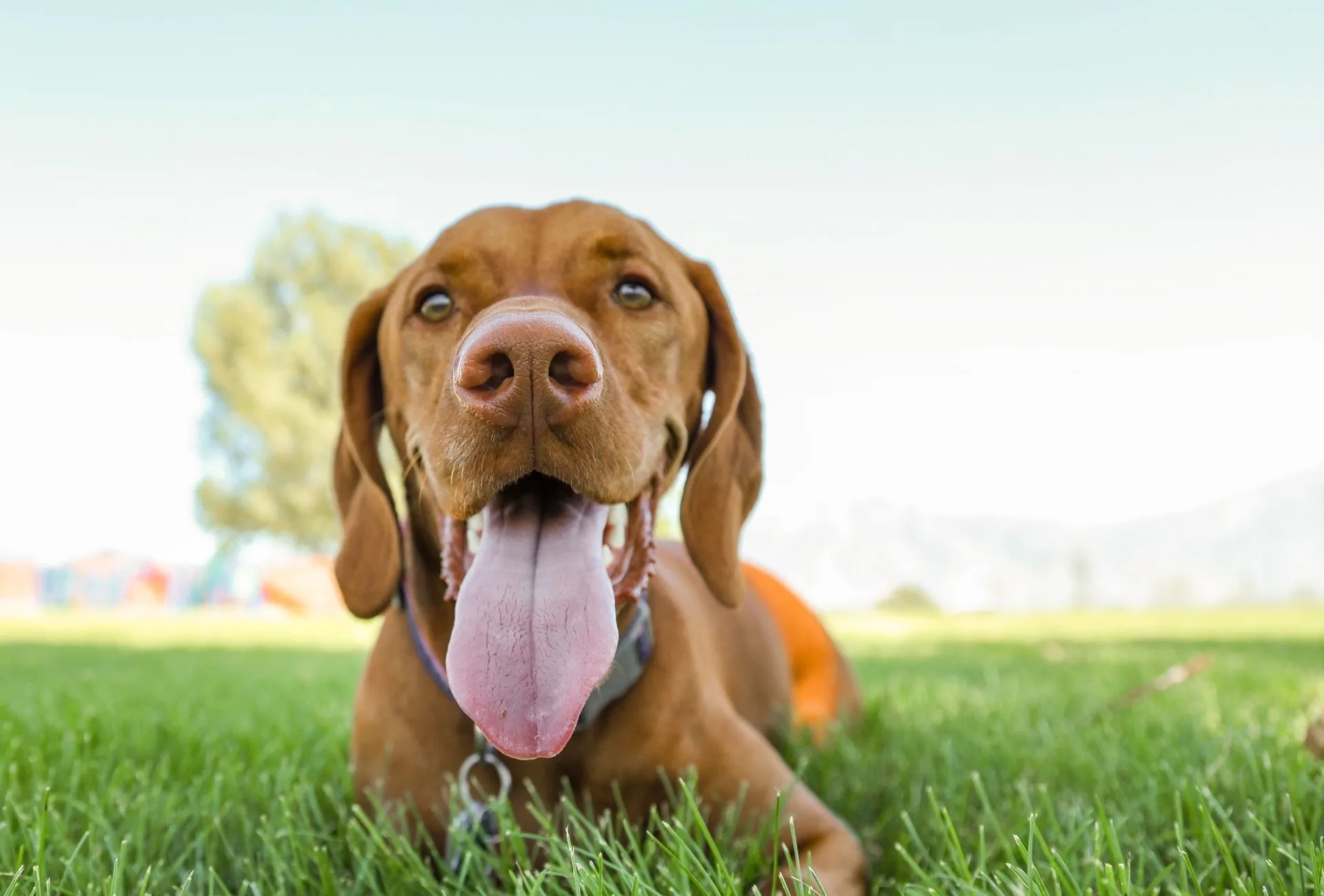The nose is such an important part of the dog’s body and they fully rely on it for their incredible sense of smell.
To maximize the absorption of different scents your dog will lick his nose many times per day.
Combined with nasal fluids and tears, your dog’s nose will always stay moist to attract those scent particles and to cool it down.
But sometimes things can go wrong and the nose might become dry, cracked, or swollen.
A change in pigmentation or even bleeding will have every dog owner concerned.
Although the nose cannot be taken as a sole indicator of your pet’s health, this additional symptom can give you some clues.
Below I have collected 10 types of “unhealthy” dog noses and what conditions they might indicate.
1. Dry Dog Nose
Although dog noses will usually be moist and cool, discovering dry skin on the nose is not necessarily a cause for concern and doesn’t mean that your dog is sick.
A dog’s nose can definitely be on the drier side from time to time especially if he has just woken up or if he has been playing outside.
If your dog hasn’t been drinking enough or suffered from vomiting/diarrhea, a dry nose may develop due to mild dehydration.

Some dogs are really bad drinkers so you may want to look into hacks that will trick your dog into drinking more water.
It’s really important to regularly moisturize your dog’s paws and nose to keep them from drying out.
Furthermore, dryness may indicate fever, allergies, and various autoimmune diseases.
You always have to look at your dog as a whole.
If a dry nose is accompanied by lethargy, vomiting, or loss of appetite, you will need to contact your veterinarian.
2. Cracked Dog Nose
When dog noses become severely dry, they might crack or become flaky.
Again this probably only means that your dog’s nose could use a good moisturizer but it doesn’t hurt to consider the possibility that it may indicate an underlying health condition.
One of these conditions is called nasal hyperkeratosis where an excessive amount of crust forms on a dog’s nose without a known cause.
It’s not a dangerous condition and applying moisturizer 2-3 times a day should suffice to remove the crust.
Dry eyes are another possible cause and you may wonder how that could influence the wetness level of the nose.
Dogs actually have narrow tubes that allow tears to drain from the eyes to the nose and mouth.
The blocked tear ducts could then, among other things, result in a dry, cracked nose.
3. Runny Dog Nose
Just like humans, dogs can have runny noses too.
This is most commonly caused by allergies to pollen, food, chemicals, or any other irritants.
The discharge is oftentimes watery and clear and accompanied by other symptoms such as swollen eyes, coughing, trouble breathing, and watery eyes.
A runny nose can occur during the spring which would indicate seasonal allergies or after your dog has come into contact with a certain fabric.
Seasonal allergies can be managed with oral medications that contain antihistamines if necessary.
Food allergies are also fairly easy to spot but finding the one ingredient that your dog is allergic to can be really difficult.
The only way to eliminate food allergies is by feeding a special diet that is usually composed of an uncommon meat source (kangaroo, deer) and one carbohydrate.
Alternatively, a hydrolyzed hypoallergenic diet might be worth a shot.
Ingredient combinations will be tested out within a certain trial period until you are able to find the culprit.
This is obviously best to do with a certified pet nutritionist or vet specializing in canine nutrition.
If your dog’s nasal discharge isn’t clear and runny then read more on that topic below.
4. Dog Nose Pigmentation
Whenever there is a visible change in your dog’s body, it’s something you should be looking into.
Although most pigmentation changes are harmless, they can still tell you something about your dog.
During your dog’s life, he can develop a completely different nose color compared to when he was a puppy.
Pink or neutral-toned noses are a common occurrence in puppies and young dogs and most will outgrow that color.
This is a normal process and no reason for concern.
Similar to the pink noses, some breeds might develop different colors depending on the seasons.
There is something called a dudley nose which is the result of pigmentation loss due to illness or environmental influences.
The usually black nose begins to turn pinkish in the middle, spreading outwards until almost the whole nose is covered.
Breeds like the Siberian Husky or Labrador Retriever can also develop a snow or winter nose that switches back to its natural color in spring.
As aforementioned, nasal hyperkeratosis can also lead to pigmentation changes including unhealed sores and scaling.

5. Warm Dog Nose
As dog noses are usually cool, feeling warmness on your dog’s nose can be very concerning.
Fortunately, a warm dog nose is rarely a cause for concern and only has a few underlying issues.
Typically if you notice a temperature increase, your dog has been laying in the sun for too long.
Although this is easily fixable, prolonged sun exposure can lead to overheating so always be careful when your dog is sunbathing.
If it isn’t hot outside or your dog hasn’t been in direct sunlight, then it can also mean that he’s running a fever.
Nonetheless, a warm nose doesn’t mean that your dog is sick.
The temperature of a dog’s nose fluctuates by the hour so this is not necessarily an indicator of your dog’s health.
6. Bumps on Dog Nose
Bumps usually pop up out of the blue and can look like red, super inflamed cysts or they can be small and skin toned.
Most of them go away by themselves but others can be more concerning.
Rapid skin growth of any kind should always be closely monitored to see if it changes and how bothersome it is to your dog.
Dogs stick their noses everywhere and sometimes they get stung by insects, poison ivy, or nettles.
Histiocytoma and papilloma for example look incredibly concerning but they are, fortunately, benign skin tumors most commonly seen in dogs under 3 years of age.
However, there are other skin tumors that are more harmful so it’s always advised to biopsy and if needed remove a lump or bump.
7. Dog Nose Bleeding
Something a dog never wants to see coming out of their pet’s nose is blood.
A bleeding nose is most commonly caused either by trauma or an upper respiratory tract infection.
If your dog had an accident, immediate veterinary care will be necessary.
You can try to stop the bleeding by placing a wrapped ice pack on your dog’s nose without covering the nostrils.
Other causes can include foreign objects, toxins, autoimmune disease, tumors, hypertension, fungal infections, and more.
Breeds like the Doberman Pinscher, German Shepherd, and Golden Retriever can suffer from congenital clotting disorder which is a genetically inheritable disease.
8. Swollen Dog Nose
A swollen dog nose can have many underlying causes that can result in inflammation.
Sudden swelling may indicate an allergic reaction to pollen, food, medication, bug bites, or toxins.
Oftentimes the eyelids and muzzle are also swollen and you can see reddened and irritated skin.
Dental issues such as broken teeth or abscesses can also cause facial swelling.
Look out for any foreign objects that are stuck in your dog’s nose and take him to the vet for a clean extraction.
A tumor in and around the passageway of the nose also leads to swelling but it is more commonly indicated by nasal discharge containing pus, blood, and mucus.

9. Sunburned Dog Nose
Anyone that ever experiences a sunburn in their life probably remembers how uncomfortable and sore it feels.
While dogs are nearly completely covered with fur there are still a few spots that can get sunburned just like your own skin.
A dog with light fur and fair skin is at the greatest risk to suffer from sunburn.
Ares around the ears, eyes, belly, and nose are especially prone to getting irritated.
If you notice redness or cracked skin on your dog’s nose, it might be time to remove him from direct sunlight.
Your dog may also be scratching or licking his nose excessively.
In more severe cases there could be skin peeling or blisters that are definitely very uncomfortable for a dog’s sensitive nose.
Some common home remedies include aloe vera and coconut oil but it’s always best to take your dog to the vet.
10. Small Nostrils
Nostrils and the mouth are the only openings that are able to admit air into the lungs.
Needless to say, to achieve sufficient airflow, the nostrils need to be a certain size in both humans and dogs.
Narrowed nostrils, also called stenotic nares, are part of the BOAS (Brachycephalic Obstructive Airway Syndrome) that most commonly affects brachycephalic breeds.
There are a total of 24 dog breeds with this conformation including the Bulldog, Pug, Boxer, French Bulldog, and Boston Terrier.
If you have one of these breeds, you might have already noticed the small nostrils which are a result of a shortened skull and longer bottom jaw.
Dogs with narrowed nostrils oftentimes snore, pant constantly, and can not be as active as other dogs.
They can also suffer from skin or eye conditions and even neurological and behavioral issues.
If your dog greatly suffers from stenotic nares, surgery is a possible option to widen the nostrils and promote better airflow.
Weight should be closely monitored in these breeds and you should also switch your collar to a harness that isn’t as constricting.
Disclaimer: This blog post does not substitute veterinary attention and does not intend to do so. I am not a veterinarian or pet nutritionist. If your dog shows any sign of illness, call your vet.
Kela
Saturday 5th of August 2023
My dog has a crusty dry nose. Even if you put moisturiser on it may peel off but comes back the next day.
Danielle
Saturday 5th of August 2023
Hi Kela, I'd advise you to check with your vet. Causes range from dehydration, infections, allergies, all the way to serious underlying issues such as an autoimmune disease. I'm not a vet so it's best to have your local veterinarian examine your dog's crusty nose.